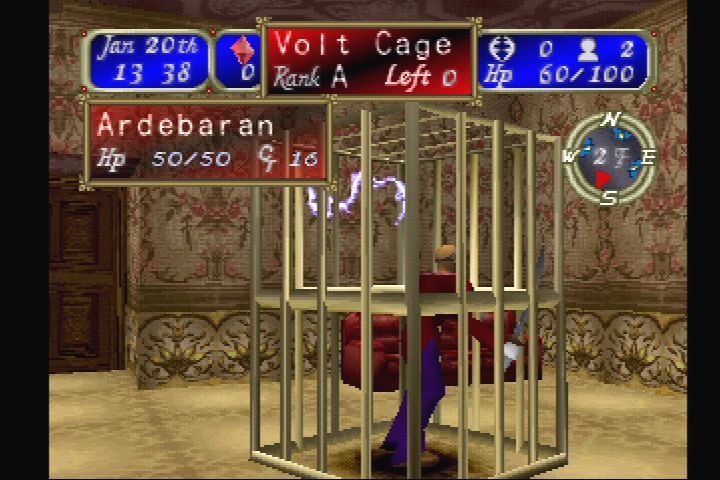Retro Replay Review
Gameplay
Tecmo’s Deception stands out primarily through its innovative use of traps as the player’s main weapon. Rather than engaging in direct combat, you craft an intricate web of devious mechanisms—falling pillars, spiked pits, and magical snares—to thwart invaders. Each trap consumes a certain amount of magic points, forcing you to think strategically about resource allocation. Do you invest in heavier traps early to thin out foes quickly, or conserve magic for powerful late-game designs?
(HEY YOU!! We hope you enjoy! We try not to run ads. So basically, this is a very expensive hobby running this site. Please consider joining us for updates, forums, and more. Network w/ us to make some cash or friends while retro gaming, and you can win some free retro games for posting. Okay, carry on 👍)
The castle itself becomes your sandbox. You can expand corridors, add rooms, and lay down hidden runes to set up chain reactions that turn routine explorations into deadly experiences. Invaders follow predetermined paths, but their AI adaptations—such as detecting previously sprung traps—mean you must keep redesigning your castle’s layout to stay one step ahead. This dynamic interplay keeps each playthrough feeling fresh, as no two defense strategies are exactly alike.
Resource management goes beyond magic points. Defeated intruders leave behind valuables and body parts. Money funds architectural expansions, while gruesome trophies can be used to summon monsters that patrol the corridors on your behalf. The moral dimension adds another layer: if you devour souls for power, you gain stat boosts at the expense of your conscience. Alternatively, releasing trespassers bolsters your morality but denies quick gains. Balancing these choices shapes both gameplay style and narrative outcome, offering considerable replay value.
Graphics
As a PlayStation-era title, Tecmo’s Deception delivers a moody, Gothic atmosphere through pre-rendered backgrounds and polygonal characters. The castle’s corridors are bathed in dim torchlight, with flickering shadows dancing across stone walls. While textures can appear blocky by modern standards, the level of detail in trap animations—spears thrusting from walls, axes swinging down from rafters—remains impressively visceral.
The color palette leans heavily on dark grays and muted reds, reinforcing the game’s theme of despair and bloodlust. Enemy character models exhibit a surprising amount of variety, from armored knights to curious wanderers, each with their own animations when caught in a trap. Watching a well-set chain reaction unfold—complete with rattling chains and cracking floor tiles—still evokes a thrill, thanks to careful attention to movement timing and sound design.
Occasional frame rate dips occur when multiple traps trigger simultaneously, but these moments only heighten the sense of chaos you’re orchestrating. Menus and UI elements are straightforward, favoring function over flair. While you won’t mistake this for a modern, high-definition spectacle, the deliberate art direction and immersive lighting ensure that every corridor of the Castle of the Damned feels both menacing and rich with dark fantasy charm.
Story
At its core, Tecmo’s Deception weaves a tragic tale of betrayal and vengeance. Once a hopeful prince in love with his sweet Fiana, you are cast into darkness when your power-hungry brother Yurias kills the king and frames you for regicide. This narrative setup not only motivates your pact with Satan but also casts a somber shadow over every trap you lay, reminding you that each soul caught is a step closer to your ultimate revenge.
The story unfolds primarily through brief cutscenes and text passages, striking a balance between pacing the action and revealing plot details. As you capture invaders—some of whom are innocent explorers—you’re forced to confront the moral consequences of your choices. The game’s dual endings reflect this tension: one path grants cold retribution, while another hints at redemption, depending on how merciful or ruthless you’ve been.
Secondary characters, such as summoned monsters and occasional castle visitors, add flavor to the narrative tapestry. Though their roles are limited, their presence and unique dialogues underscore the game’s overarching themes of corruption and damnation. The result is a compact yet compelling storyline that keeps you invested, even as you lose yourself in the mechanics of trap crafting and resource gathering.
Overall Experience
Playing Tecmo’s Deception is a study in contrasts: serene castle building juxtaposed with the brutality of your own inventions. The learning curve can be steep, especially when deciphering which trap combinations yield the most effective results. However, once you master the mechanics, the sheer satisfaction of watching would-be heroes fall into your meticulously designed ambushes is unparalleled.
Replayability is one of the game’s strongest suits. Multiple endings, a range of castle layouts, and the moral choice system ensure that returning to the Castle of the Damned never feels repetitive. Whether you’re aiming for ultimate power by devouring every soul or seeking a more benevolent conclusion, your decisions carry weight and shape both gameplay and narrative outcomes.
While the graphics and sound design firmly root the title in its mid-’90s origins, the unique concept and engaging systems help Tecmo’s Deception stand the test of time. For players seeking a departure from conventional action or RPG titles—those who want strategic depth wrapped in Gothic storytelling—this game remains a hidden gem well worth exploring.
 Retro Replay Retro Replay gaming reviews, news, emulation, geek stuff and more!
Retro Replay Retro Replay gaming reviews, news, emulation, geek stuff and more!









Reviews
There are no reviews yet.